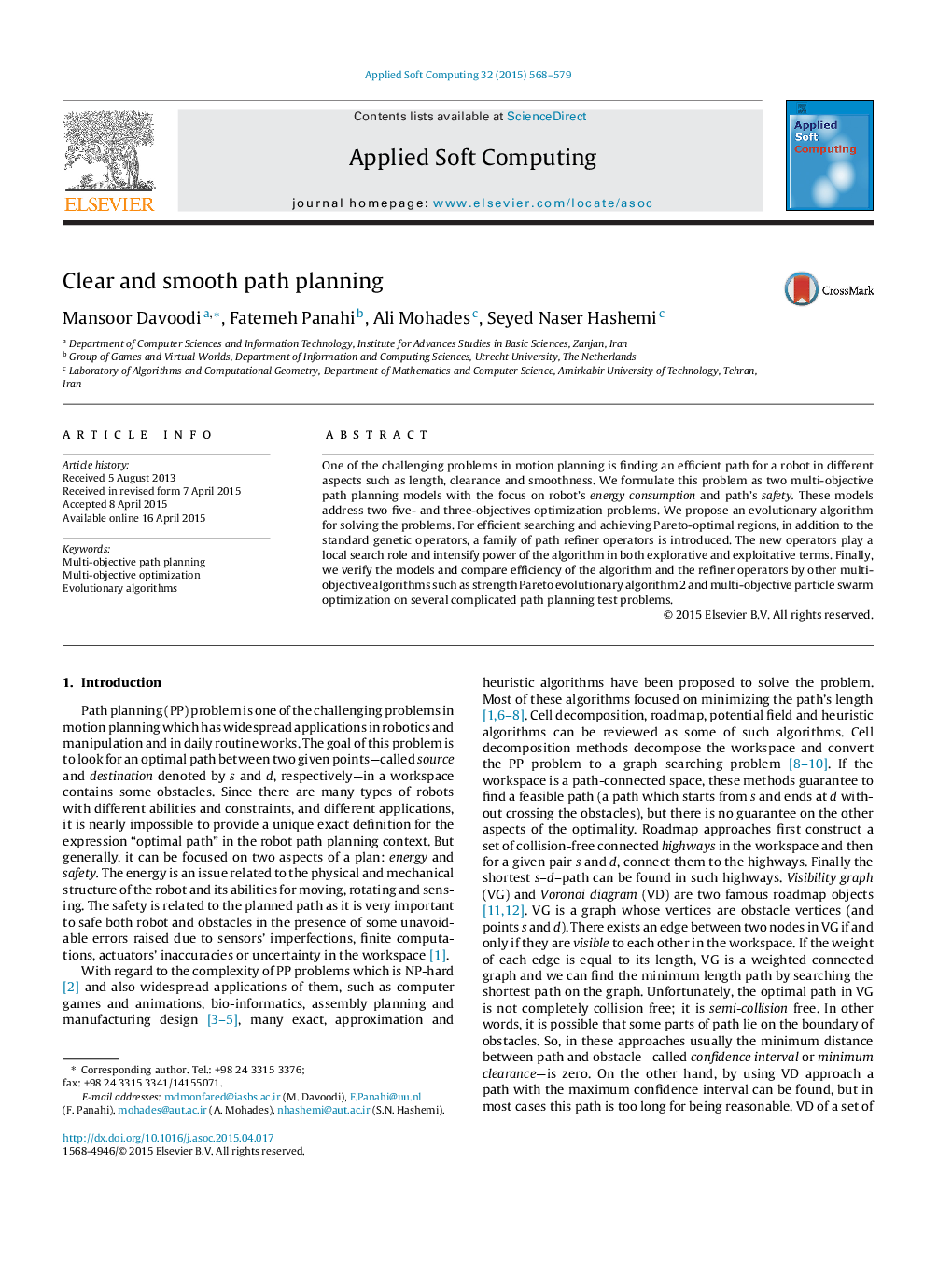| Article ID | Journal | Published Year | Pages | File Type |
|---|---|---|---|---|
| 495037 | Applied Soft Computing | 2015 | 12 Pages |
•Formulating the problem of path planning as multi-objective models.•Considering energy consumption and safety of path.•Proposing geometric-based operators customized for the path planning.•Proposing an efficient multi-objective evolutionary algorithm.•Comparing the algorithm with the other robust algorithms in difficult search problems.
One of the challenging problems in motion planning is finding an efficient path for a robot in different aspects such as length, clearance and smoothness. We formulate this problem as two multi-objective path planning models with the focus on robot's energy consumption and path's safety. These models address two five- and three-objectives optimization problems. We propose an evolutionary algorithm for solving the problems. For efficient searching and achieving Pareto-optimal regions, in addition to the standard genetic operators, a family of path refiner operators is introduced. The new operators play a local search role and intensify power of the algorithm in both explorative and exploitative terms. Finally, we verify the models and compare efficiency of the algorithm and the refiner operators by other multi-objective algorithms such as strength Pareto evolutionary algorithm 2 and multi-objective particle swarm optimization on several complicated path planning test problems.
Graphical abstractIn this paper we discuss on multi-objective robot path planning in continuous space with static obstacles. We focus on the point-to-point paths with three goals minimizing path length, maximizing clearance and maximizing smoothness. We propose an efficient evolutionary algorithm to solve this problem.Figure optionsDownload full-size imageDownload as PowerPoint slide
